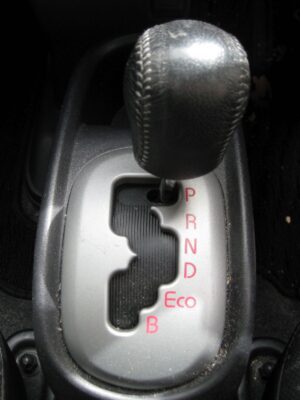Hi Bryce,
My question is fairly academic, but it’s been gently nagging me:
We are awaiting delivery of a BYD Atto 3 but we also considered quite a few other cars before we decided. These included the Polestar 2, MG ZS and Volvo XC40. Most of these cars had at least three driving modes. Atto 3 is Sport, Normal and Eco, Polestar 2 includes Sport, Eco and Comfort, Tesla is Chill, Standard, Sport, etc …).
When I’ve seen figures for acceleration (0 to 100 in X seconds), I’ve assumed it has been for when the car is in Sport mode, but I’ve also assumed the WLTP range is measured in Normal mode. Is this the case, or could it be in Eco?
As far as I understand the modes are not directly relatable between manufacturers or models. I saw a comment that setting the Nissan leaf into eco mode increased its range by about 3%. I wonder if this figure is similar for most EVs?
Would there be anything to prevent a car having modes named Normal, Smooth and Sporty and getting a higher WLTP range estimate on that basis?
Regards
Tom
Hi Tom – you ask an interesting question. In fact, it’s one I suspect many EV drivers have pondered about, but never got as far as putting it into words like you have.
First-up, let’s go back to when drive modes appeared in the first mass market EVs: the Mitsubishi iMiEV (2010) and the Nissan Leaf (2011). Both offered ‘Drive’ mode as the normal function with an ‘Eco’ mode added in an effort to eke out what were then very short driving ranges.
Eco did this by making the car take off more slowly and increasing the amount of regenerative braking (colloquially referred to as ‘regen’) to put more charge back in the battery when braking, otherwise the BEV in Drive was designed to not scare people new to EVs and slowed down more like an ICE car – as in only very gently.
(Regen works through using the motor as a generator to recharge the battery instead of shedding the energy as heat and wear through friction between the brake pads and discs).
Mitsubishi also added a second drive option ‘B’ that kept the motor performance but added more regenerative braking than in drive or eco.
It was soon found that whilst Eco did add a little to the range, it took a lot away from the driving fun of an EV! In fact, it didn’t take long for drivers (and manufacturers) to realise that Drive with extra regen was the way to go – with Nissan in 2013 adding a B mode that combined the normal performance in Drive with additional regen.
As can be seen from the image above, the selector gate in the iMiEV was designed to closely mimic an ICE car with D being placed the first spot after neutral – presumably because Mitsubishi expected it to be the usual selection. (In fact Eco and B were locked out in the Citroen and Peugeot versions of the iMiEV called respectively the C-Zero and iOn).
However, iMiEV drivers soon realised that B was the better choice for best driving performance and range …. but it was placed at the very bottom of the gate – a position many iMiEV owners to this day find somewhat annoying!
From there, the options for drive modes just got more complicated as Nissan (and the ever increasing number of new EV manufacturers) tried to get the balance between zippy performance and maximising range right, with Nissan taking this to the logical end by creating the ‘e-pedal’, or what some call the i-pedal.
In e-pedal mode, you don’t need to use the brake pedal at all in normal driving – the strength of the regenerative braking is dependent on how much you lift the accelerator (like pushing harder on the brake pedal) and the car will smoothly pull up to a complete stop if you lift your foot completely from the accelerator.
In e-pedal mode, the brake pedal is purely for extra hard or emergency braking needs.
I could go on – every manufacturer has added their own touches to drive modes and regenerative braking options, although there has been some settling around the concepts of ‘Sport’, ‘Normal’ and ‘Eco’ with slightly different flavours of these depending on the assumed market for the model.
For instance, ‘Sport’ in the Ioniq 5 feels more like ‘Comfort’ mode in the Kona. Regen is also selectable in several makes of BEV – to take the example of Hyundai again: theirs offer four selectable regen levels via steering wheel paddles (one, two, three and off).
Also (thankfully) the drive selection method has also evolved away from mimicking an ICE car and EV drive modes are chosen in ways that better reflect the way EVs operate – such as choosing ‘Drive’ and then selecting the mode via a separate pushbutton.
So yes, Tom, you are right in your assumption that the drive modes are not relatable between manufacturers or models.
As for test figures: the 0 – 100km/h time is not a figure required by government testing regimes so the manufacturers often maximise the advantage to incorporate a Sport mode for setting them.
(Sport mode generally doing mild to heavy damage to range estimates!) Personally, I never use Sport mode in my Kona … apart from the occasional need to do a quick get-away at the lights from a slow driver. -)
On the other hand, driving range estimates are required to be tested under strict conditions so potential buyers can properly compare and assess vehicles. (Of course, to do a proper comparison they do need to be tested under the same conditions – for more on why the three major international vehicle test cycles each give different estimates, see my article here).
As a result, range estimates are required to be made using the drive mode that is expected to be used by the majority of drivers. This means that unless otherwise specified, this will be the ‘Normal’ or equivalent mode.
Eco then becomes the way to eke the driving range out a bit more in extreme need. Mind-you, choosing Eco in any of my current or former EVs (2011 Leaf, 2010 iMiEV, 2019 Kona or my partner’s Renault Zoe) has generally added little to the range estimates.
As to the future of drive modes, it would not surprise me if over time they become simplified and standardised – just as the clutch, brake and accelerator pedal positions finally settled into their now standard positions during the 1920s.
Eco should be the first to go: after all, Eco an artefact of history when BEVs had short ranges and nervous drivers – but as I said earlier, I have never found it to add much in terms of range.
As an example, swapping between drive modes today the range estimates for my Kona were Comfort: 215 km; Eco: 219 km and Sport: 212 km. Hardly worth the effort to select Eco over Comfort – or to keep the option into the future.
When it comes to Sport: we are already seeing signs of it disappearing. The Volvo C40/XC40 for instance has only one drive mode and no regen settings other than e-pedal or off. My guess is that Sport will eventually all but disappear – except of course for performance cars like the Porsche Taycan, Tesla Model S Plaid, Kia EV6 GT etc.
As for regen itself, that one is still in the throes of developing. Some manufacturers stick to multiple driver selectable levels, some have e-pedal an as on/off availability only and others combine the two in varying ways.
Hope that helps Tom? A great question and one delving into how we get to the point of assumed ‘standard’ features in everyday things and how we get to that point. (By the way, for any bored readers out there: try delving into the history of which way up is ‘on’ for a light switch around the world!)
Bryce Gaton is an expert on electric vehicles and contributor for The Driven and Renew Economy. He has been working in the EV sector since 2008 and is currently working as EV electrical safety trainer/supervisor for the University of Melbourne. He also provides support for the EV Transition to business, government and the public through his EV Transition consultancy EVchoice.
I agree to the Terms of Use
Sorry. No data so far.
I agree to the Terms of Use
Input your search keywords and press Enter.
